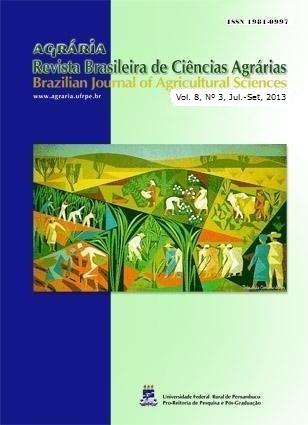Cultivars of upland rice as affected by soil management
DOI:
https://doi.org/10.5039/agraria.v8i3a2606Keywords:
moldboard plow, Oryza sativa, productivity, no-tillage systemAbstract
The identification of cultivars more adapted for each type of soil management could increase the yield of upland rice. Therefore, this study aimed to evaluate rice genotypes in two systems of soil management, conventional tillage with moldbard plow (CT) and no-tillage system (NTS) under Cerrado conditions. The work was carried out in two places of the Ipameri municipality, in Goiás State, during 2008/2009 season. A randomized block design in a factorial scheme 2 x 5 with five replications was used. The first factor was composed of soil management (CT and NTS) and the second one was rice genotypes (BRS Sertaneja, BRS Primavera, BRS MG Curinga, Caiapó and BRS Bonança). The cultivars BRS Sertaneja, BRS MG Curinga, Caiapó e BRS Bonança had higher grain yield under CT compared to NTS. BRS Primavera had similar yield in both soil managements. The cultivar BRS Primavera was the most productive under NTS, and under CT cultivars had similar development. Upland rice grain yield was higher at UEG-Ipameri than at Santa Brígida Farm.



